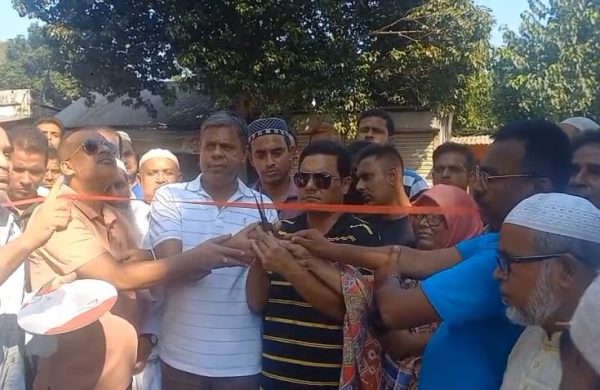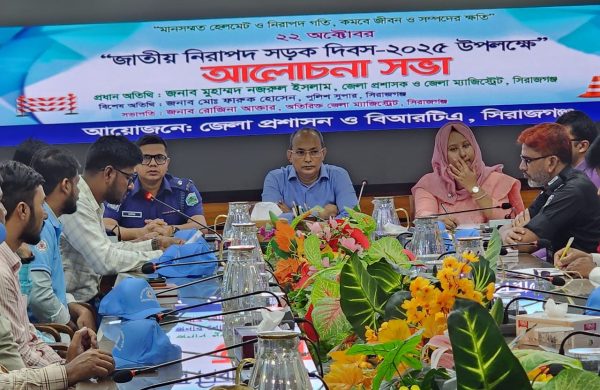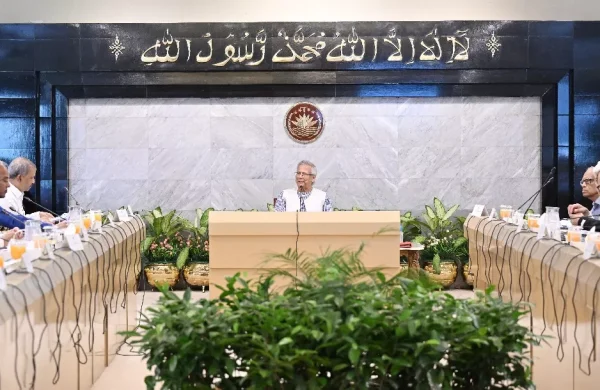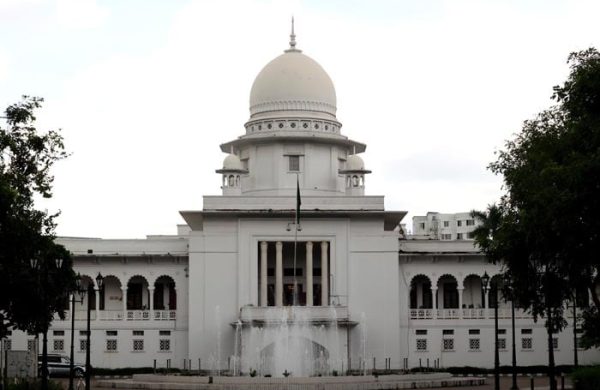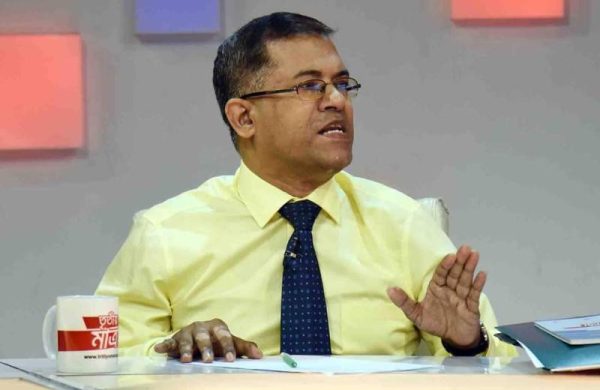‘Bangladesh reports’ put credibility of Indian media into question
- Update Time : Monday, August 12, 2024
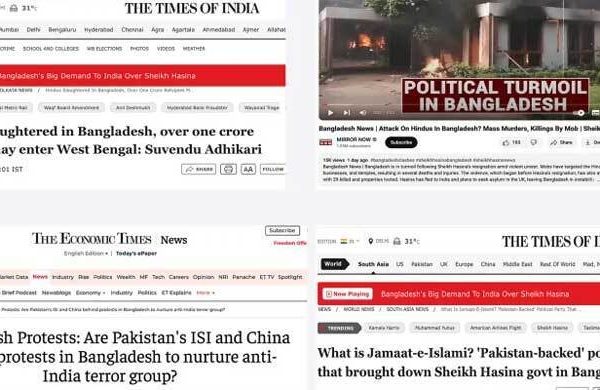
TDS Desk:
Amid the political upheaval following Sheikh Hasina’s resignation as Prime Minister of Bangladesh, a wave of fake news has surfaced in Indian media, alleging widespread persecution of Hindus and reprisal attacks on Awami League leaders.
These misleading reports have been amplified across social media platforms, fueling communal tensions and spreading disinformation about the situation in Bangladesh.
The most recent instance of disinformation emerged on Sunday when several reputed Indian media outlets claimed to have received a message from Sheikh Hasina via special messengers. According to these reports, the former prime minister allegedly stated that she could have remained in power if she had compromised with the United States over the issue of St. Martin’s Island. As these reports circulated widely in Indian media, they were also reproduced by many Bangladeshi outlets.
However, Sheikh Hasina’s son and adviser, Sajeeb Wazed Joy, later branded these reports as false, asserting on Facebook that his mother had not issued any statements since fleeing Bangladesh.
Another example of such disinformation is a video posted by Mirror Now, a Times Group-owned channel, titled “Attacks on Hindus in Bangladesh? Genocide, killed by angry mobs.” The video showed footage of violence and arson, claiming that the houses set on fire belonged to Hindus. However, upon verification, it was revealed that two of these houses belonged to Muslims. The title of the video was clearly misleading, as no genocide or massacre had occurred. One of the affected houses was associated with Sheikh Mujibur Rahman, a symbol of Bangladesh’s independence.
The spread of disinformation did not stop there. Al Jazeera independently verified that only two Hindus had been killed since Hasina’s ouster, both of whom were connected to the ruling Awami League party—one was a police officer, and the other was a party activist. Despite this, numerous fake news stories circulated in the Indian media, including a Times of India report claiming that over one crore (10 million) refugees might soon enter West Bengal from Bangladesh. This baseless claim was attributed to Subhendu Adhikari, a top leader in Prime Minister Narendra Modi’s government.
In another example, the news agency ANI, known for its proximity to Modi’s government, quoted an Indian student leader who claimed that the mass protests in Bangladesh were orchestrated by the country’s enemies. Similarly, the Times of India published a bizarre claim that the Jamaat-e-Islami had “destroyed the Sheikh Hasina government.”
Some Indian media outlets have even speculated that Pakistan’s Inter-Services Intelligence (ISI) was behind the mass protests in Bangladesh, further contributing to the spread of disinformation.
The Indian government has responded to these false reports by setting up a special committee to ensure the safety of Hindus and other minorities in Bangladesh and launching a hotline for their protection. However, fact-checkers have confirmed that most of the fake posts about the persecution of Hindus in Bangladesh originated from Indian accounts. Some of these rumours also spread from within Bangladesh, further complicating the situation.
While there have been isolated attacks on Hindus in Bangladesh, with houses set on fire, the primary targets were the homes and properties of Awami League leaders and activists, regardless of their religious identity. Local Awami League members who fled to India have confirmed that both Hindu and Muslim party members were attacked. Fact-checkers believe that Indian social media has given a sectarian colour to what is primarily a political conflict.
Amidst the chaos, some ‘influencers’ in India have taken advantage of the situation by sharing misleading videos that falsely portray Bangladeshi Hindus as being systematically persecuted. One viral post claimed that the house of cricketer Liton Das was set on fire by radical Islamists, but it was later revealed that the burnt house belonged to former Bangladesh national team captain Mashrafe Bin Mortaza.
Another viral post falsely claimed that a mob had attacked a temple in Chattogram. However, BBC Verify confirmed that the temple remained undamaged, and the real target appeared to be an Awami League office located nearby.
Despite the fake news circulating on social media, many people in Bangladesh are refusing to fall into the trap of communal conflict. Local residents, including both Hindus and Muslims, have been seen working together to protect each other’s places of worship. A Hindu resident from Chittagong expressed gratitude towards his Muslim neighbours, highlighting the solidarity that exists on the ground, even in times of political turmoil.








